An NV series drive from Kingston needs no introduction. The company has been a leader in SSD module manufacturing, with a strong focus on delivering affordable drives worldwide. This series is a budget lynchpin, a fan favorite for inexpensive builds and upgrades. The Kingston NV3 2230 follows in these footsteps to help conquer a market that’s seen unprecedented growth since Valve’s Steam Deck launch, a shorter form factor solution that faces extra challenges when the goal is maximum capacity. Kingston meets this head-on with a drive that’s also relatively inexpensive, an important consideration in an increasingly turbulent storage market.
The good and bad news is that this means you know what you’re going to get: an affordable, passable drive with usually wide availability but unknown hardware. The first part is good. As for the controller and flash, well, you know that you can never be sure, as the NV series uses whatever is available. That’s bad. How much does this matter for M.2 2230? Well, given the drive’s specifications, which set the minimum, this drive is plenty fast for any device that can take it. The controllers that pass muster and can fit on M.2 2230 are largely decent and will usually be paired with adequate flash – our sample has good hardware even with its QLC flash. This usually means a power-efficient drive, which is critically important for this form factor. The highest capacities also need newer or future flash to work, although we wouldn’t be surprised if some lingering QLC stock could end up on the drive, and that’s less ideal at the most common capacities.
We offer a hedge by relying on the old adage: you get what you pay for. The Kingston NV 2230 is inexpensive and fundamentally sound, but not high-end. If you’re looking for the fastest or best, this isn’t the drive for you. If you want something that will offer an excellent experience at a lower cost, then it should certainly be on your list. It’s likely equal to or better than many no-name brands, and the wide capacity range on offer lets you dial in exactly what you need. It can always be extended in length to fit M.2 2242 or 2280 slots, too. Our sample has excellent power efficiency, so we see no problem with that from a cooling perspective, keeping in mind that usually M.2 2280 versions of drives have more surface area for heat dissipation. To wrap it up simply: Kingston has once again delivered on a simple budget premise, this time in a smaller form factor.
Kingston NV3 2230 Specifications
Swipe to scroll horizontally
Pricing | w/HS | N/A | |||
Form Factor | M.2 2230 (Single-sided) | M.2 2230 (Single-sided) | M.2 2230 (Single-sided) | M.2 2230 |
Interface / Protocol | PCIe 4.0 x4 / NVMe 1.4 | PCIe 4.0 x4 / NVMe 1.4 | PCIe 4.0 x4 / NVMe 1.4 | PCIe 4.0 x4 / NVMe 1.4 |
Controller | SMI SM2268XT2 | SMI SM2268XT2 | SMI SM2268XT2 | SMI SM2268XT2 |
DRAM | N/A (HMB) | N/A (HMB) | N/A (HMB) | N/A (HMB) |
Flash Memory | Kioxia 218-Layer QLC | Kioxia 218-Layer QLC | Kioxia 218-Layer QLC | Kioxia 218-Layer QLC |
Sequential Read | 5,000 MB/s | 6,000 MB/s | 6,000 MB/s | N/A (6,000 MB/s) |
Sequential Write | 3,000 MB/s | 4,000 MB/s | 5,000 MB/s | N/A (5,000 MB/s) |
Random Read | N/A | N/A | N/A | N/A |
Random Write | N/A | N/A | N/A | N/A |
Security | N/A | N/A | N/A | N/A |
Endurance (TBW) | 160TB | 320TB | 640TB | N/A (1,280TB) |
Part Number | SNV3SM3/500G | SNV3SM3/1T0 | SNV3SM3/2T0 | SNV3SM3/4T0 |
Features | N/A | N/A | N/A | N/A |
Warranty | 5-Year | 5-Year | 5-Year | 5-Year |
The Kingston NV3 2230, unlike many M.2 2230 SSDs, is available in a wide range of capacities: 500GB, 1TB, 2TB, and eventually 4TB. Current pricing is at $50.23, $79.99, and $139.69. This pricing is competitive as one would expect from a Kingston NV3 drive. The drive is capable of hitting up to 6,000 / 5,000 MB/s for sequential reads and writes, with no specifications given for random read and write IOPS. We would expect a ceiling around 1,000K IOPS with this hardware.
These specifications are effectively identical to the full-length NV3, but there are changes worth noting. The first is that while the TBW is the same, the 2230 version of the drive has a five-year rather than a three-year warranty. This means the drive writes per day (DWPD) is actually lower on this drive, although still higher than the Crucial P310 2230. Write endurance shouldn’t be an issue with a drive of this type, but be aware of this distinction. Another difference is weight, with the 2280 NV3 being much heavier, as one would expect. The final difference is the flash: BiCS6 QLC on the 2280 and BiCS8 QLC on the 2230 NV3, a change we will dig into in more depth later.
Kingston NV3 2230 Software and Accessories
Kingston’s primary software offering is the Kingston SSD Manager, which is your typical SSD toolbox application. It’s designed to help you monitor disk health, verify properties of the drive, and upgrade the drive’s firmware. Kingston also has its own OEM version of Acronis True Image, which is used to back up, clone, and restore data. These two applications cover almost everything you’d need for a drive, although of course they are designed for Windows.
Kingston NV3 2230: A Closer Look
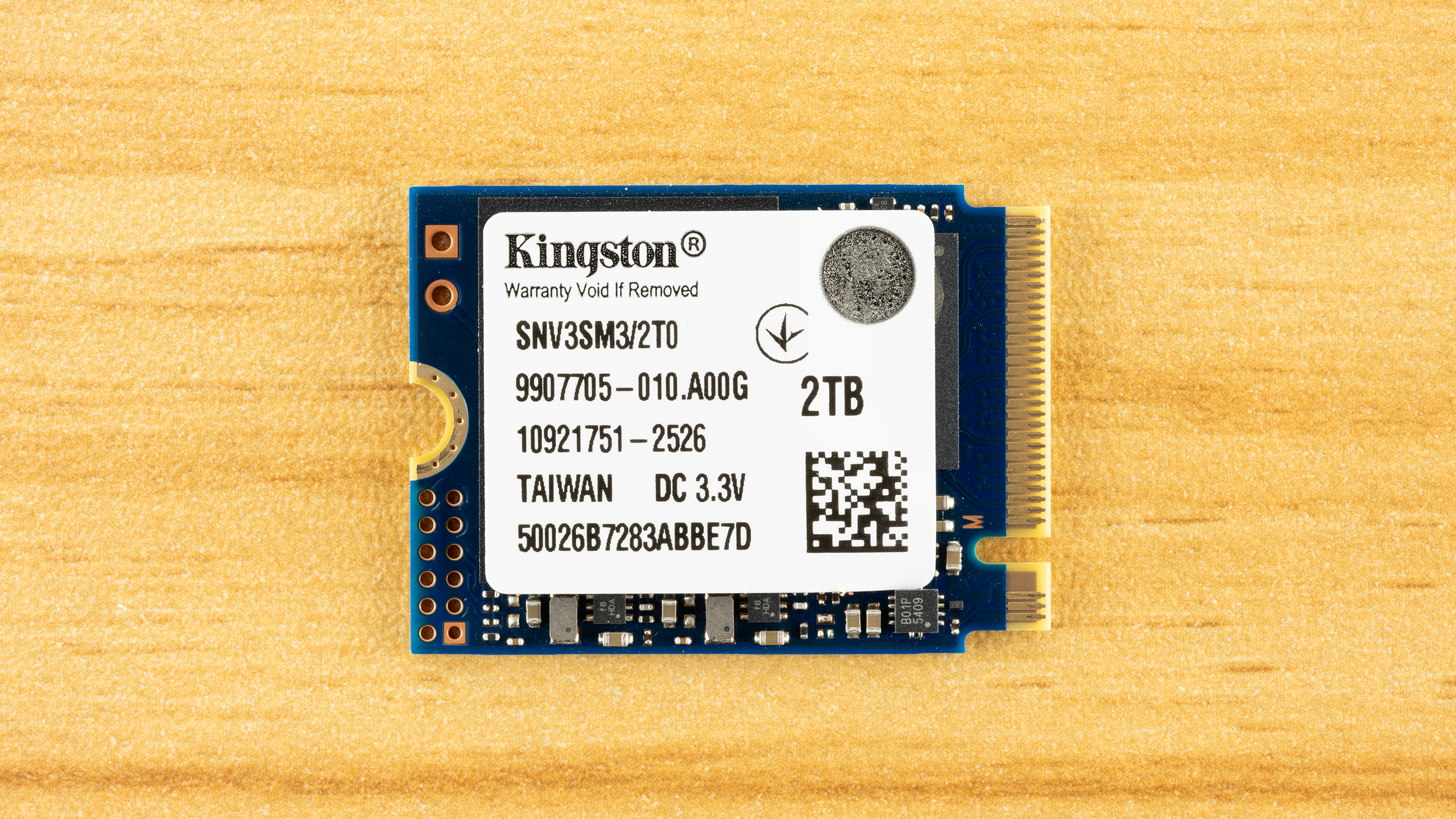
The Kingston NV3 is a single-sided drive at 2TB, which is pretty cool for an M.2 drive. We’ve seen that before, yes, but it still surprises you when you have such a tiny drive in your hands. Drives in this form factor benefit from being single-sided for compatibility. The Steam Deck, for one, is best with a single-sided drive for fitment, given motherboard components and the EMI shield. Other systems that can take longer drives, from 2242 to 2280, can meet this requirement at higher capacities more easily, as there is space on the board for between two and four NAND flash packages versus just one for 2230.
That brings one thing into question: Kingston has suggested a 4TB SKU is on the way for this drive, can it be single-sided? Currently, consumer flash is stacked at up to 16 dies per package, which, with 1Tb dies, means 2TB at the most.
32-stack technology is out there, but it's not reasonable for this type of device. Even 16-die packages can be challenging at higher speeds, as we saw with some 1TB TLC-based 2230 drives from Phison that had trouble in rare edge cases. The NV3 would have to either be double-sided or use 2Tb dies at 4TB. The latter is very possible – we may even see 2Tb dies at lower capacities – and it will be interesting to see what Kingston does.
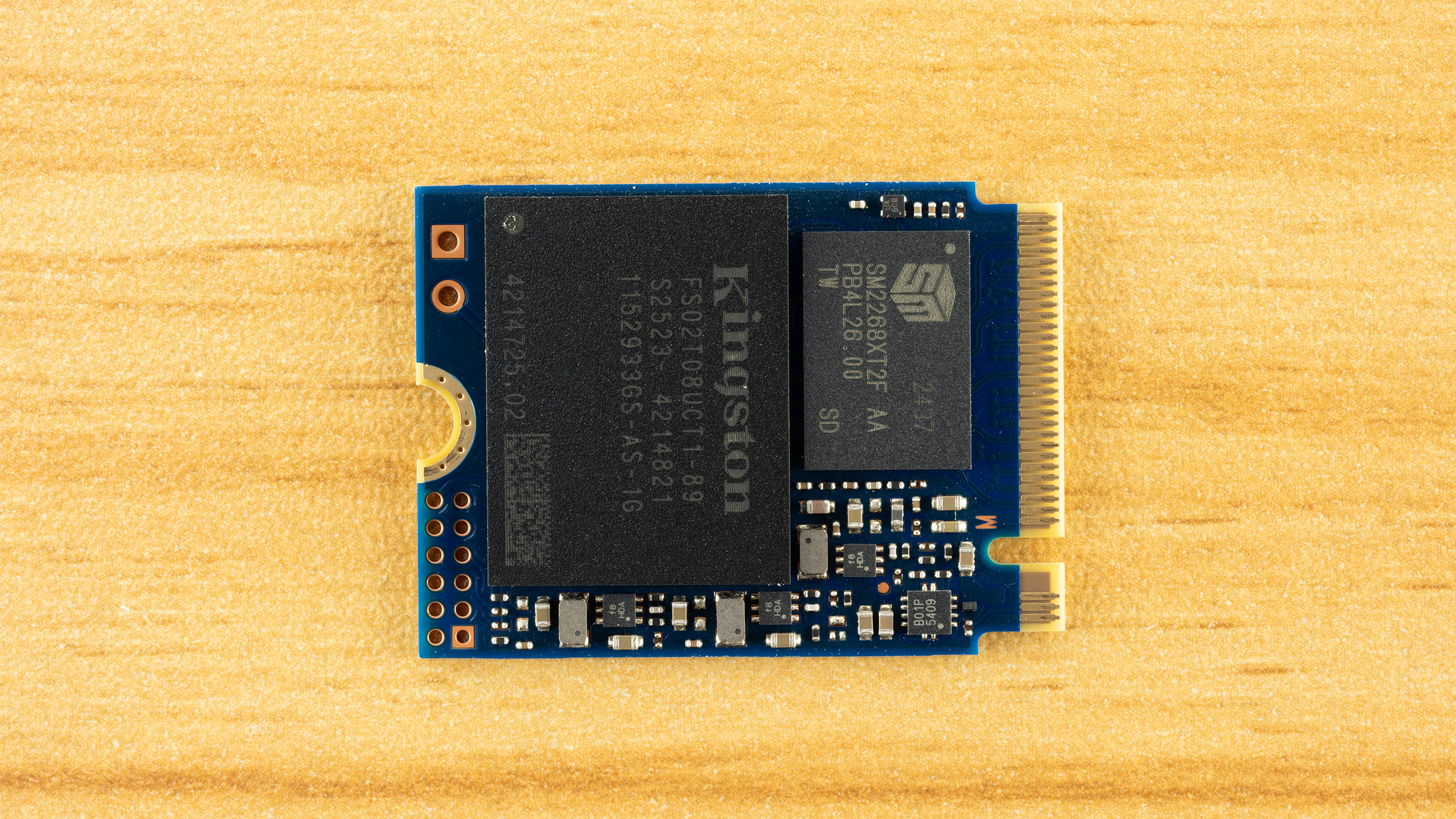
Here we can see the controller, the Silicon Motion SM2268XT2, and the single NAND flash package. The XT2 is very similar to the original XT, the main difference being that the XT2 can handle up to 3,600 MT/s flash, while the XT is designed for 3,200 MT/s. There aren’t too many drives with either controller variant, the Kioxia BG6 probably being the most well-known one with the XT. The subtle change is similar to Phison’s “upgrade” from the E27T to the E29T – with flash support going from ONFi/Toggle 5.0 to 5.1 – with the latter being found on Micron’s 2600, a drive we may review in the near future. In practice, there’s no huge benefit to increasing the I/O rate as a four-channel PCIe 4.0 SSD controller can saturate the interface with just 2,400 MT/s, but enabling a higher rate can improve performance and/or efficiency in some cases.
The BiCS8 QLC flash is an upgrade over the regular NV3's BiCS6 QLC. There are improvements across the board as the newer architecture has better power efficiency and, in general, some of the best latency results we’ve seen. Specifically, the SanDisk WD Blue SN5100 is using this flash to very good effect, offering a TLC-like experience. It’s perfect for an M.2 2230 drive. One thing we can point out is that the 1TB and 2TB SKUs are slightly heavier than the 500GB SKU, which could mean heavier flash packages or more circuitry. It could also imply the use of 2Tb dies, now or in the future. However, it’s not uncommon for flash packages to maintain size and weight regardless of functional die count because fillers and dummy dies are used for uniformity.
None of that matters for the end user, but when looking at the weaker performance specifications for this drive and remembering that Kingston’s NV series of drives uses variable hardware, we must caution that the hardware might not remain what we’re reviewing today. Any new hardware must meet existing specifications, so even minor discrepancies can be a tell. Given the relatively low TBW and even lower DWPD than the 2280 variant, it’s likely this drive will only have QLC or lower-end TLC flash. The future 4TB SKU, if it comes, will be more standardized given the rarity. We think that, considering all these factors, the 500GB SKU should mostly be avoided unless it’s your only choice.
MORE: Best SSDs
MORE: Best External SSDs

 2 hours ago
6
2 hours ago
6
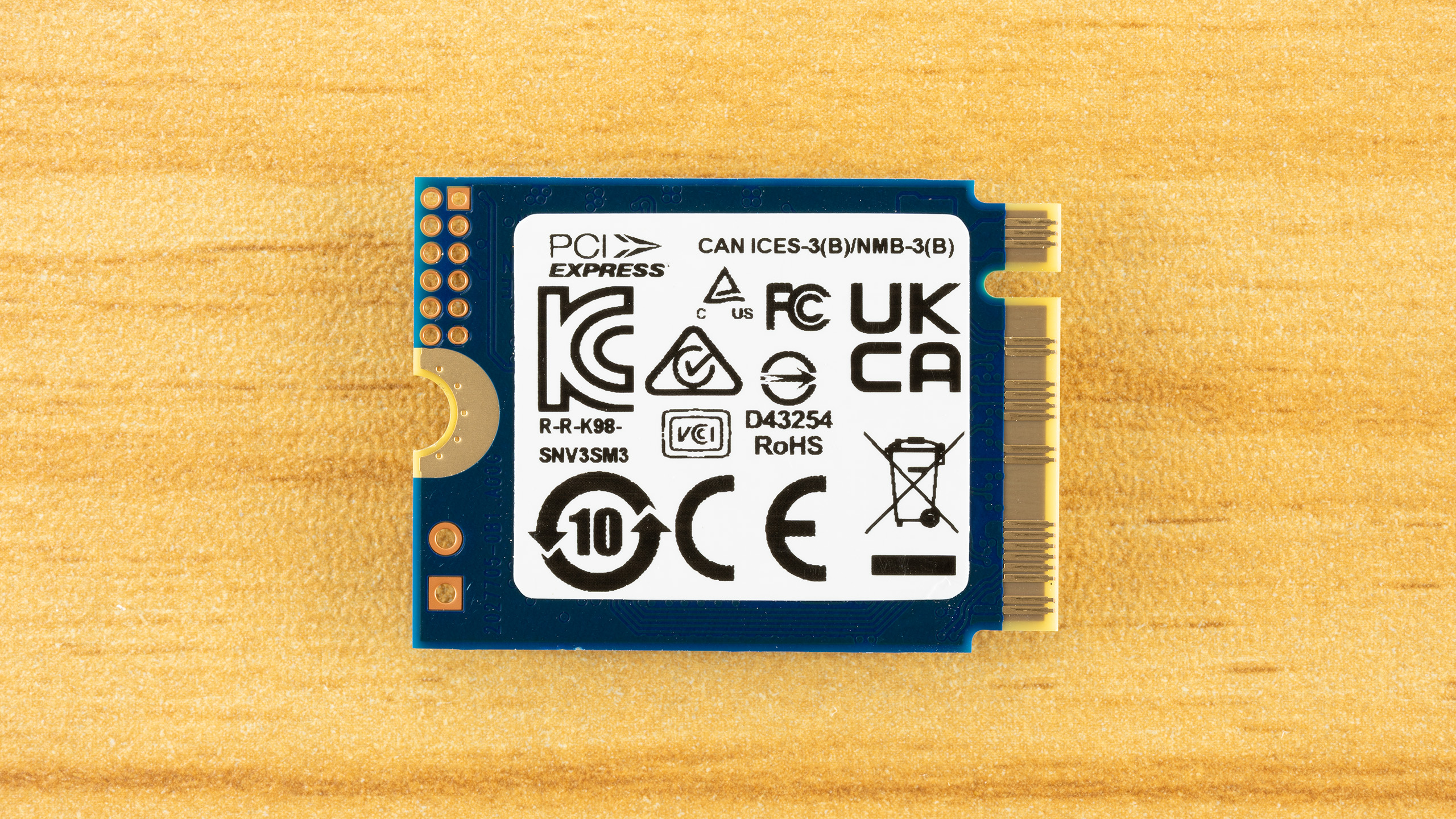



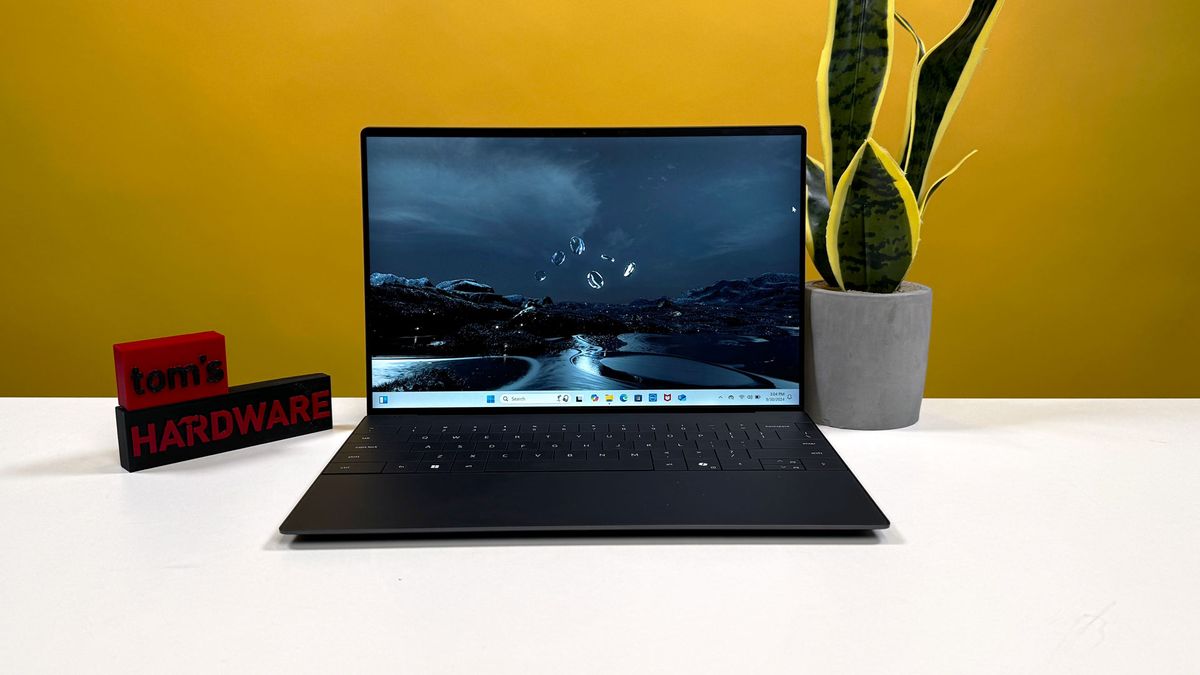
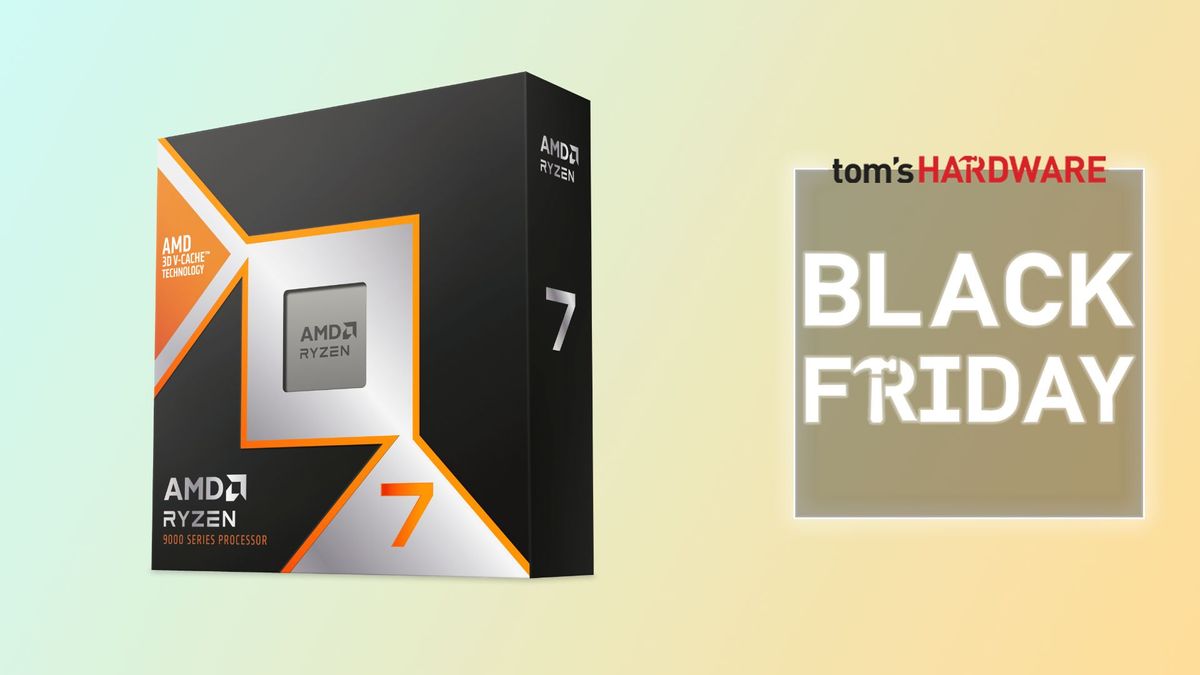







 English (US) ·
English (US) ·